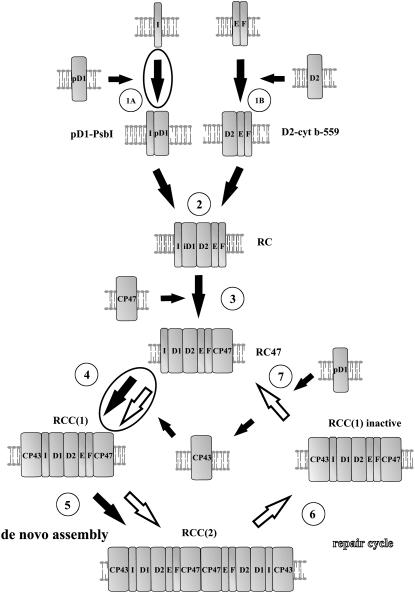Figure 8.
Illustration of function of PsbI during PSII assembly and repair. De novo assembly of PSII (large black arrows) starts with association of PsbI (I) with pD1 (step 1A) forming pD1-PsbI precomplex on one side, and association of Cyt b-559 protein subunits α and β (E and F) with the D2 protein forming Cyt b-559-D2 precomplex on the other side (step 1B). Assembly continues by formation of the RC complex from both precomplexes (step 2). Then CP47 (step 3) and CP43 (step 4) are attached and resulting PSII core monomers RCC(1) form the PSII core dimer [RCC(2), step 5]. PSII repair cycle (white arrows) starts with inactivation of the D1 protein and monomerization (step 6). Then it continues by detachment of CP43 and selective replacement of the D1 protein (step 7). The final two steps, the CP43 attachment and PSII dimerization, seem to be common with the de novo assembly pathway. PsbI is important for processes of formation of pD1-PsbI precomplex (step 1A) and attachment of CP43 to RC47 (step 4) as indicated by encircled arrows. For simplicity, other small and extrinsic PSII subunits were omitted. pD1, Unprocessed forms of D1; iD1, partially processed forms of D1.

